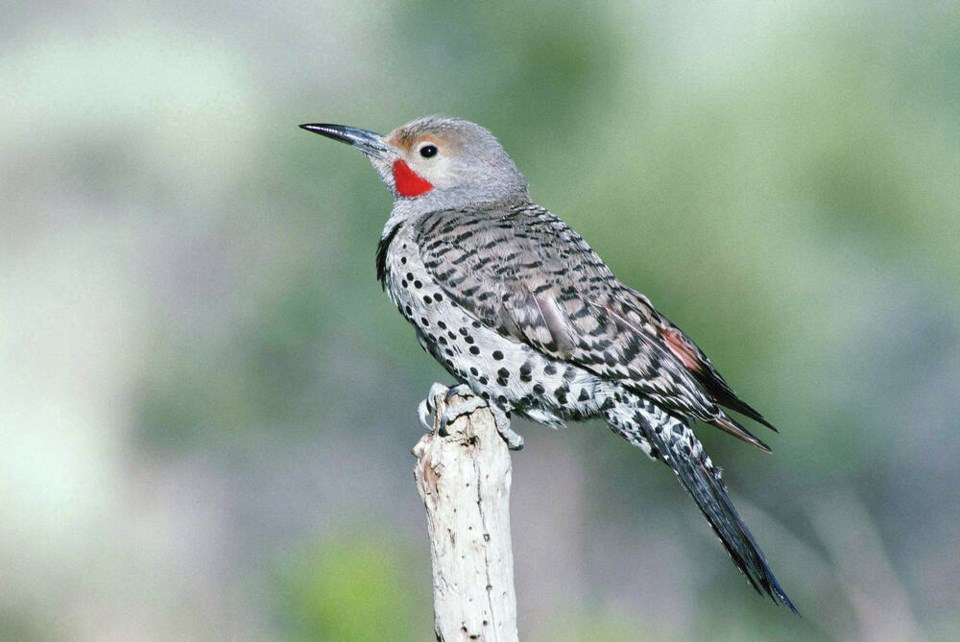“Do you hear that?” Nature Boy cocked his head and held up his hand.
From outside came the distinctive hoot of a great horned owl, echoed by a slightly deeper call.
“They’ve returned. They’re nesting in the park again.”
I’ve written previously about a pair of great horned owls that nested — and then didn’t — nearby.
Their return this year meant Nature Boy was able to report “Great Horned Owls” as part of his Great Backyard Bird Count checklist. He was one of thousands who took part in the annual citizen science project spearheaded by the Cornell Lab of Ornithology, the Audubon Society and Birds Canada in mid-February.
Despite its name, the count isn’t limited to backyards. Organizers invite people to spend time “in any of their favourite places” over the four-day event, watching and counting as many birds as they can find, then reporting them to eBird, an online bird-data storehouse and the world’s largest biodiversity-related citizen science project.
In south-coastal B.C., the February timing catches overwintering birds, as well as early migrating and early nesting birds. Those include the owls across the way, the eagles nesting in Mount Doug Park, and the many hummingbirds that had their tiny nests buried under snow in recent weeks, as well as the juncos, robins, wrens, towhees, geese, ducks and so forth found throughout the region.
Elsewhere in the world, species, numbers and what the birds are up to differ.
At time of writing, almost 27,500 91原创s and more than 325,000 people worldwide had submitted their checklists for the count. (Thousands more continue to upload their lists every day. You can watch the submissions in real time at .)
More than 5,000 checklists have been submitted from B.C. Two-thirds of the top-100 91原创 hotspots noted during this year’s bird count are in B.C., with 197 species sighted in 5,500 locations, many of which were on the south coast.
Of the 50 B.C. hotspots with most species sighted, nine were in the capital region.
Saanich, named a “Bird Friendly City” by Environment Canada and Nature Canada in December, is home to seven of those locations.
Sixty species were sighted at Blenkinsop Lake, 55 at Swan Lake Nature Sanctuary, 53 at Panama Flats, a combined 86 at two places at Elk/Beaver Lake, and a combined 77 at two locations on Ten Mile Point.
Beyond Saanich’s borders, Esquimalt Lagoon, Island View Beach and Cattle Point — all popular birdwatching areas — also feature within the top 50 B.C. spots, each offering up a few dozen species.
The “Bird Friendly City” designation recognizes 91原创 cities that have taken steps to become safer places for birds.
The certification program, developed and administered by Nature Canada, encourages municipalities to take steps and implement policies to reduce the number of human-caused threats to birds, such as stray cats, pesticide use, and bird-window collisions, as well as to protect and restore bird habitat and educate local residents.
91原创 and Lions Bay are also designated bird-friendly cities under the Nature Canada program. Almost half the top 50 B.C. bird count hotspots this year are located within Metro 91原创.
The statistics are also a testament to the number of people here and across the moat who are sufficiently interested in birds to spend a few hours for a day or two in chilly temperatures searching for them.
Boots on the ground are critical for species and population counts like the backyard bird count. The more people out looking for and counting birds during a blitz, the more winged individuals are likely to be counted.
The sheer number of eyes out watching also means fewer species in the area on the days in question are likely to be overlooked.
The high counts for the area also reflect our location along the 91原创 flyway, one of the world’s major north-south flight paths for migratory birds.
And, notwithstanding this February’s snow and frost, the normally temperate winters of the south coast also contribute. As with many human 91原创s, some birds choose to spend the year’s cooler months here instead of migrating further south. And for some birds, this is south.
If you missed the Great Backyard Bird Count this year, mark it and the Christmas Bird Count on your calendars for next winter.
The next big bird event in the area is Parksville’s Brant Wildlife Festival in early April, but many local parks and nature areas organize smaller bird-related events through the spring and fall migrations.
>>> To comment on this article, write a letter to the editor: [email protected]



